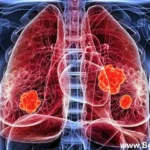In America, lung cancer is one of the leading causes of cancer-related deaths. It is broadly classified into two main types, NSCLC and SCLC, based on the appearance of cancer cells under a microscope. NSCLC is the standard type, accounting for 85% in total, and generally grows and spreads slowly than SCLC. All the healthcare providers ensure accurate medical records and billing with the help of the International Classification of Diseases, 10th Revision (ICD-10)
Talking about ICD-10 coding for lung cancer, it ensures that diagnoses are recorded precisely. Hospitals need to use the correct non-small cell lung cancer ICD-10 code for patients. Because it is necessary for patient care management, tracking disease prevalence, and facilitating accurate reimbursement.
Today, in this guide, we will help you navigate the specific NSCLC ICD-10 code options for proper documentation.
Understanding Non-Small Cell Lung Cancer (NSCLC)?
It is the most common type of lung cancer, and its broad classification covers several types of lung cancers that behave similarly. The tumor of NSCLC generally grows and spreads slowly to other parts of the body.
The main types of NSCLC are identified by the kinds of cells where the cancer begins. These include:
- Adenocarcinoma: It is the most common subtype and often found in the outer parts of the lungs. People with extreme smoking habits are the victims of it. Recently, this subtype has also been frequently diagnosed in non-smokers.
- Squamous Cell Carcinoma: The starting point is when flat cells lining the inside of the airways near the center of the lungs. Typically found in people who have a history of smoking or are still doing it.
- Large Cell Carcinoma: It is not so common, but it is the most rapidly spreading and untreatable type of NSCLC and can appear in any part of the lung.
To identify one of the above-mentioned types of NSCLC, you must consult a doctor for examination. But if you want to know the symptoms of NSCLC, these include:
- A persistent cough
- Chest pain
- Puffiness
- Shortness of breath
- Unexplained weight loss
Although in all types of lung cancer, the primary risk factor is smoking but there are other factors too.
Risk Factors:
Other risks include
- Exposure to secondhand smoke
- Radon gas
- Asbestos
- Other environmental pollutants
If the patient already dealing with cancer, the above-mentioned factors can worse their condition, so there is need to address them timely.
ICD-10 Overview for Non-Small Cell Lung Cancer:
As we all know, ICD-10 is a global standard for reporting diseases and health conditions. From patient record-keeping and insurance billing to tracking public health trends, the ICD-10 system of diagnostic codes is essential in healthcare for everything. Providing a detailed ICD-10 overview helps clarify how conditions are documented.
In medical coding for lung cancer, codes are organized to specify the type and location of the cancer. C34 is the main category for malignant neoplasms of the bronchus and lungs. When adding more details, the code will expand gradually. For example, C34.1 represents a malignancy in the upper lobe, while C34.3 indicates the lower lobe.
How are they Different?
General and specific codes are different in a following ways:
- Code like C34.90 (Malignant neoplasm of unspecified part of unspecified bronchus or lung) might be used initially; a more precise diagnosis is necessary for proper treatment and billing. It is where diagnostic codes for NSCLC come in.
- In the particular codes for non-small cell lung cancer (NSCLC), healthcare provider allows to document the exact histology, such as adenocarcinoma or squamous cell carcinoma.
Cancer is the severe medicinal condition that required proficiency and accuracy in adding the detail of the patient. It ensures precise medical records and supports targeted care strategies, which are vital for managing this complex disease.
List of ICD-10 Codes for Non-Small Cell Lung Cancer:
Here’s a comprehensive list of ICD-10 codes for Non-Small Cell Lung Cancer (NSCLC) based on the location of the tumor within the lungs:
Location of Cancer |
ICD-10 Code |
| Malignant neoplasm of the main bronchus | C34.0 |
| Malignant neoplasm of the upper lobe, bronchus, or lung | C34.1 |
| Malignant neoplasm of the middle lobe, bronchus, or lung | C34.2 |
| Malignant neoplasm of the lower lobe, bronchus, or lung | C34.3 |
| Malignant neoplasm of overlapping sites of the bronchus and lung | C34.8 |
| Malignant neoplasm of unspecified part of bronchus or lung | C34.9 |
| Malignant neoplasm of the hilus of the lung | C34.00 |
| Malignant neoplasm of the upper lobe, right bronchus, or lung | C34.11 |
| Malignant neoplasm of the upper lobe, left bronchus, or lung | C34.12 |
| Malignant neoplasm of the middle lobe, right bronchus, or lung | C34.2 |
| Malignant neoplasm of the lower lobe, right bronchus, or lung | C34.31 |
| Malignant neoplasm of the lower lobe, left bronchus, or lung | C34.32 |
| Malignant neoplasm of overlapping sites of the right bronchus and lung | C34.81 |
| Malignant neoplasm of overlapping sites of the left bronchus and lung | C34.82 |
| Malignant neoplasm of unspecified part of right bronchus or lung | C34.91 |
| Malignant neoplasm of unspecified part of left bronchus or lung | C34.92 |
Histology-specific codes are often reported with morphology codes (ICD-O) alongside ICD-10 topography codes in oncology registries.
How to Code NSCLC Correctly:
Accurate ICD-10 coding of precise documentation for Non-Small Cell Lung Cancer (NSCLC) ensures that clinical information is communicated effectively. It will support medical coding compliance and prevent claim denials. One can improve their coding practices by starting with a few key principles.
Tips for Accurate NSCLC Documentation:
- For the highest level of ICD-10 coding accuracy, documentation must be specific.
- Always include the exact location of the malignancy.
- Indefinite descriptions lead to unspecified codes, which can cause payment delays and audits.
- Clearly identifying the primary site is the first step toward correct coding.
One of the most essential NSCLC documentation tips is to specify laterality, whether the cancer is in the right or left lung. For example, if the tumor affects a specific lobe like the upper, middle, or lower, this detail is also essential.
Common Errors and How to Avoid Them:
Error No 1:
A frequent error is failing to document the specific type of NSCLC, such as adenocarcinoma or squamous cell carcinoma.
Error No 2:
Another common mistake is omitting laterality. To avoid these errors, providers should create a documentation checklist that includes laterality, specific lobe, and cancer histology.
It is necessary for all healthcare providers to conduct regular training of their clinical and coding staff. So they can perform professionally and efficiently with the best practices. It can enhance their medical coding compliance, its accuracy with improve data quality.
Why ICD-10 Coding is Essential?
On a patient’s chart, these codes are more than just alphanumeric sequences. From providers to payers, these standardized healthcare billing codes translate diagnoses into a format that everyone can understand. This universal language of coding in healthcare, playing a crucial role in both clinical and administrative functions.
Apart from billing, the accuracy of ICD-10 is essential for the following purposes:
1. Insurance and Other Claims:
Accurate ICD-10 coding ensures efficinent insurance claims and compensation. The accuracy in coding confirms that healthcare providers are adequately compensated for the services they deliver. A wrong or non-specific code can lead to claim denials, delayed payments, and significant administrative burdens. For specialized fields, the oncology coding importance cannot be overstated, as complex treatments require precise codes to justify reimbursement and reflect the actual cost of care.
2. Helpful Research Material:
Beyond billing, the power of ICD-10 data tracking extends into public health and research. When diagnoses are coded uniformly, researchers can analyze vast datasets to identify disease trends, evaluate treatment effectiveness, and allocate resources for public health initiatives. This data helps them understand the prevalence of specific conditions and guides medical advancements.
3. Cancer Registries:
ICD-10 codes are vital for maintaining consistency in specialized databases, such as cancer registries. By using a standardized system, registries can accurately track cancer incidence, treatment outcomes, and survival rates across different regions and populations. This consistency is essential for long-term studies and for developing strategies to fight cancer. In essence, precise ICD-10 coding is the foundation of reliable healthcare data and efficient operations.
Moreover, ICD-10 codes are utilized and recognized internationally, and even patients can receive the treatment outside of America. The codes will help the doctors to start the treatment without any delay.
ICD-10 vs ICD-9 for Lung Cancer:
The transition from ICD-9 to ICD-10 brought significant changes to medical coding, particularly for complex diseases like lung cancer.
- When comparing ICD-9 vs ICD-10 lung cancer coding, the most notable difference is the level of detail and specificity. While ICD-9 offered broad categories, ICD-10 provides a much more smooth system for classifying malignancies.
- For NSCLC, these coding improvements are especially crucial. ICD-9 had limited options, often grouping different types of NSCLC under a general code.
- ICD-10 allows clinicians to specify the exact location of the tumor, its laterality (right or left lung), and even the specific lobe involved.
Moreover, precise coding allows accurate data collection and analysis, which is vital for research and advanced health studies. Most importantly, it supports effective treatment planning in the form of better therapies, track disease progression, and improve patient outcomes.
FAQs:
What is the main ICD-10 code for non-small cell lung cancer?
The main code is C34.9 for NSCLC, which represents malignant neoplasm of the lung, unspecified.
How do you code for metastatic non-small cell lung cancer?
For metastatic NSCLC, use C78.0 alongside the primary cancer code.
Is there a specific ICD-10 code for Stage 4 NSCLC?
There is no specific ICD-10 code for any cancer stage but is indicated by combining codes for primary and metastatic sites.
What is the difference between a code for active cancer and a history of code?
In active cancer codes indicate ongoing disease, while history of codes signify past cancer with no current treatment.
Why is it important to specify the location (e.g., right upper lobe) in the ICD-10 code?
When the health provider specify the location, it ensures accurate coding and better clinical documentation.
Conclusion:
Precise ICD-10 coding for lung cancer is fundamental for patient care and healthcare operations. Accurate codes helps for developing effective treatment plans, securing proper reimbursement, and contributing to reliable public health data. Given the complexity of lung cancer classifications, from tumor location to staging, achieving this level of precision can be challenging.
Hence, it is critical to consult with certified medical coders or oncologists to verify coding choices. The professional align ensures compliance, minimizes claim denials, and upholds the integrity of patient records. Prioritizing coding accuracy ultimately supports better outcomes for patients and the healthcare system as a whole.






